
|
Navy Air Warfare Center CALLSIGN: SALTY DOG 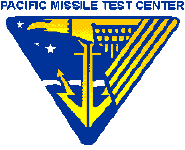 NWTS: Naval Weapons Test Squadron Point Mugu, redesignated VX-30 as of May 01, 2002
NWTS: Naval Weapons Test Squadron Point Mugu, redesignated VX-30 as of May 01, 2002NWTS: Naval Weapons Test Squadron China Lake, redesignated VX-31 as of May 01, 2002 NAWC AD: NAWC Aircraft Devision, redesignated VX-23 The NAWC combines four Navy shore facilities: the Naval Weapons Evaluation Facility (NWEF), the Naval Ordnance Missile Test Station (NOMTS), the Pacific Missile Test Center (PMTC) and the Naval Weapons Center (NWC). The mission of the Naval Air Warfare Center is to be the Navy's full spectrum research, development, test, and evaluation (RDT&E) engineering support, and Fleet-support center for air platforms, autonomous air vehicles, missiles and missile subsystems, weapon systems associated with air warfare, and sensor systems used to conduct antisubmarine warfare from air platforms. 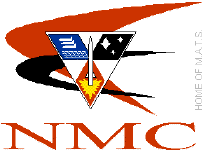 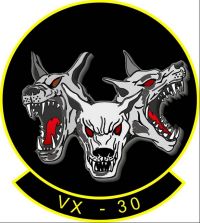 In March 1945, having learned the lessons from World War II, Secretary of the Navy James V.
Forrestal proposed a Navy base for weapons testing at Point Mugu. While awaiting presidential
approval, the Navy began staging key missile testing personnell and equipment at NAS Mojave
where Pilotless Aircraft Unit had been established. Approval for establishment of Naval Air
Missile Center, Point Mugu came from President Harry S. Truman in May 1946. NAS Mojave was
disestablished after Point Mugu began operations on 1 October 1946.
In March 1945, having learned the lessons from World War II, Secretary of the Navy James V.
Forrestal proposed a Navy base for weapons testing at Point Mugu. While awaiting presidential
approval, the Navy began staging key missile testing personnell and equipment at NAS Mojave
where Pilotless Aircraft Unit had been established. Approval for establishment of Naval Air
Missile Center, Point Mugu came from President Harry S. Truman in May 1946. NAS Mojave was
disestablished after Point Mugu began operations on 1 October 1946.
On 7 January 1959, the Naval Air Missile Test Center became Naval Missile Center (NMC). The center continued to be the hub of missile testing and development throughout the 1960s 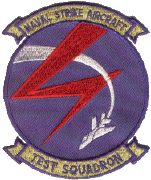 and still holds that distinction today. In the 1970s, base personnell helped develop and test the F-14 Tomcat's incomparable AWG-9 radar system and AIM-54 Phoenix missile. The Tomcat and its associated systems were put through their paces at the NMC, later Pacific Missile Test Center (PMTC), until the aircrafts acceptance in 1973.
and still holds that distinction today. In the 1970s, base personnell helped develop and test the F-14 Tomcat's incomparable AWG-9 radar system and AIM-54 Phoenix missile. The Tomcat and its associated systems were put through their paces at the NMC, later Pacific Missile Test Center (PMTC), until the aircrafts acceptance in 1973.
Tomcat testing coninues today at NAWC (Naval Air Warfare Center) with ongoing development of improved weapons and systems. 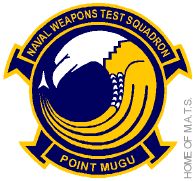 Roll 'em out, shoot 'em up! That's what the people at the Weapons Survivability Lab (WSL)
are going to do with some F-14s. WSL personnel are recycling venerable F-14 Tomcats that are at
the end of their flying careers. Eight of them will be used in the Joint Live Fire Program to
evaluate the vulnerability of deployed aircraft types: They are shot at and then the damage is
examined to see if the aircraft could have completed its mission and made it back to a
carrier/airfield. The other Tomcats will be taken apart to salvage valuable spare parts for the
Tomcats that continue to serve the fleet. Roll 'em out, shoot 'em up! That's what the people at the Weapons Survivability Lab (WSL)
are going to do with some F-14s. WSL personnel are recycling venerable F-14 Tomcats that are at
the end of their flying careers. Eight of them will be used in the Joint Live Fire Program to
evaluate the vulnerability of deployed aircraft types: They are shot at and then the damage is
examined to see if the aircraft could have completed its mission and made it back to a
carrier/airfield. The other Tomcats will be taken apart to salvage valuable spare parts for the
Tomcats that continue to serve the fleet.
The Digital Flight Control System (DFCS) is another programm evaluated by the NAWC. An F-14D from NAWC AD Patuxent River flew for the first time 14 July 1995 using a new DFCS designed to protect aviatiors against unrecoverable flat spins and carrier landing mishaps. F-14D  F-14B  F-14D  NF-14D  |
Top of the page |
F-14 Tomcat Squadrons: VF-74 | VF-84 | VF-101 | VF-102 | VF-103 | VF-111 | VF-114 | VF-124 | VF-142 | VF-143 | VF-154 VF-191 | VF-194 | VF-201 | VF-202 | VF-211 | VF-213 | VF-301 | VF-302 | VF-1285 | VF-1485 VF-1486 | VX-4 | VX-9 | NAWC | NATC | NFWS | NASA | Iranian Air Force Carrier Airwings | Squadron Awards F-14 Tomcat: Other Topics: Start Page Foreword FAQ Updates Copyright © by Torsten Anft |